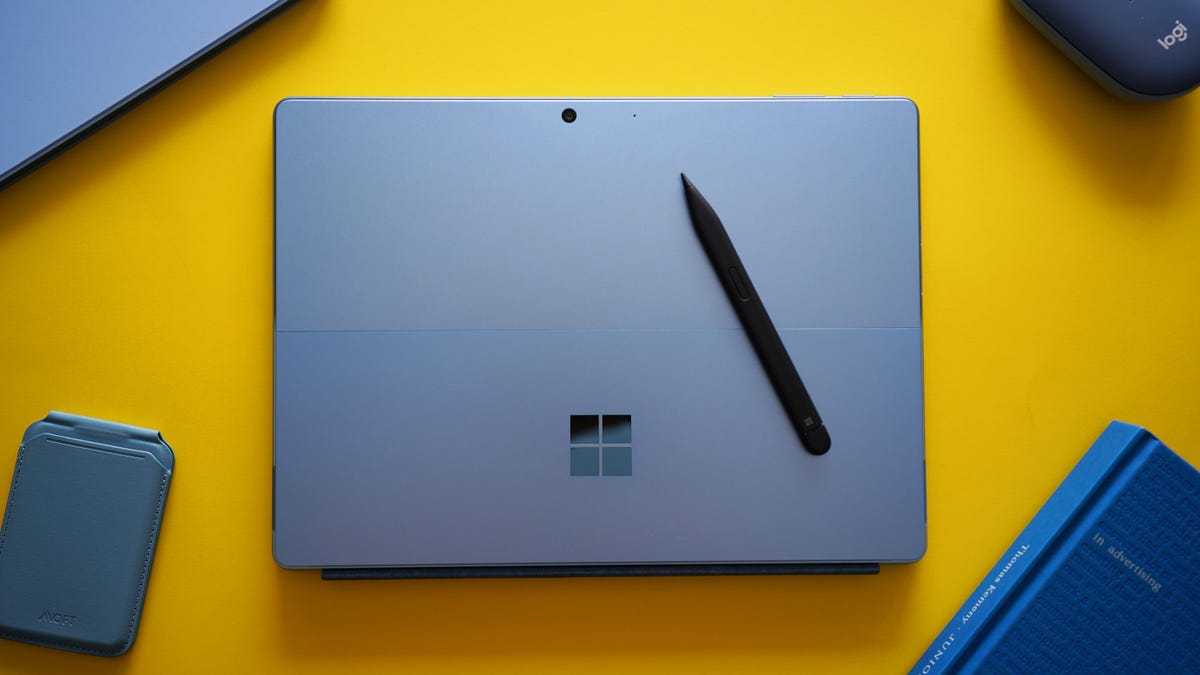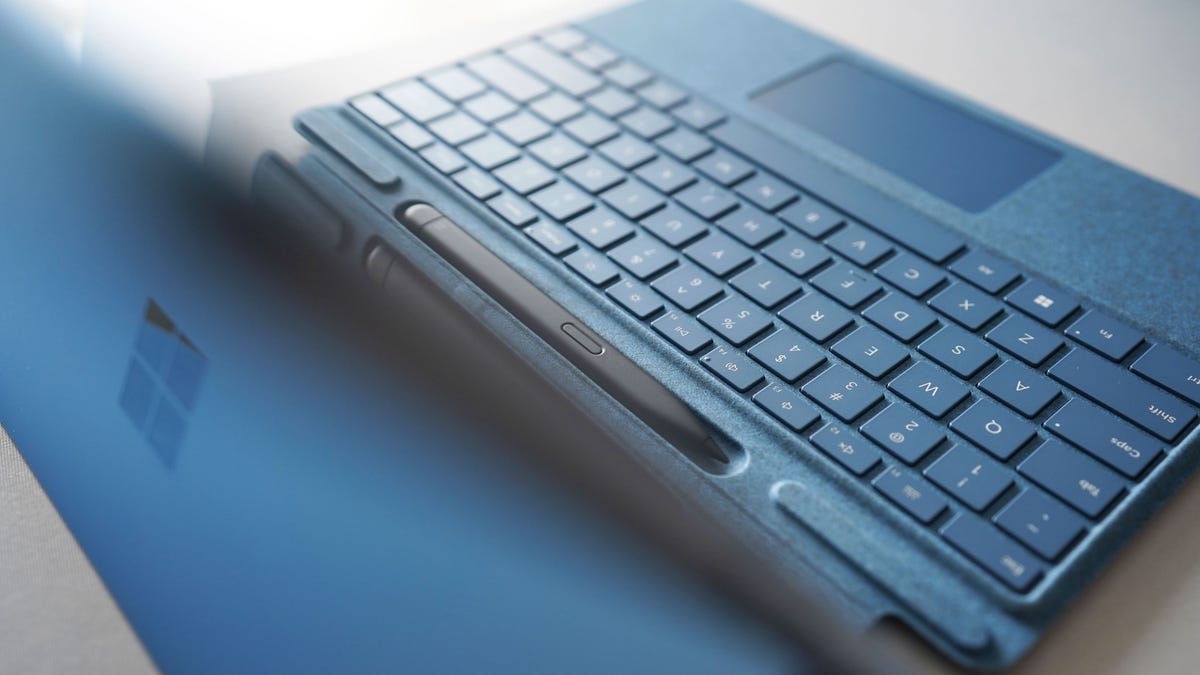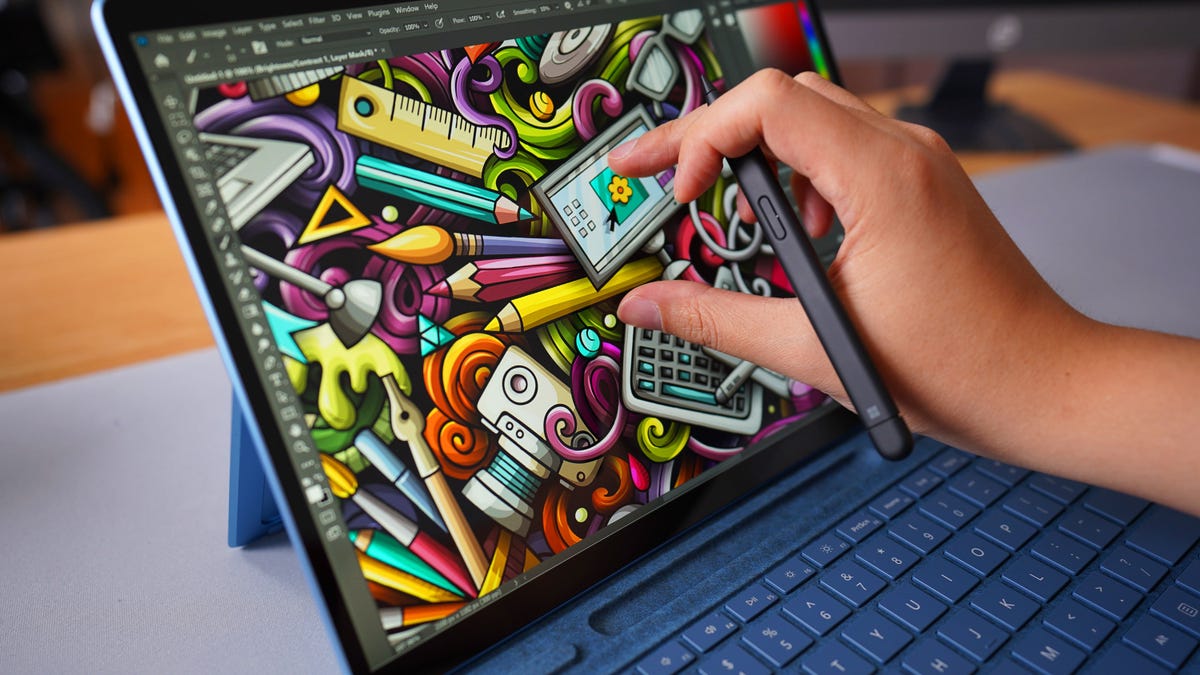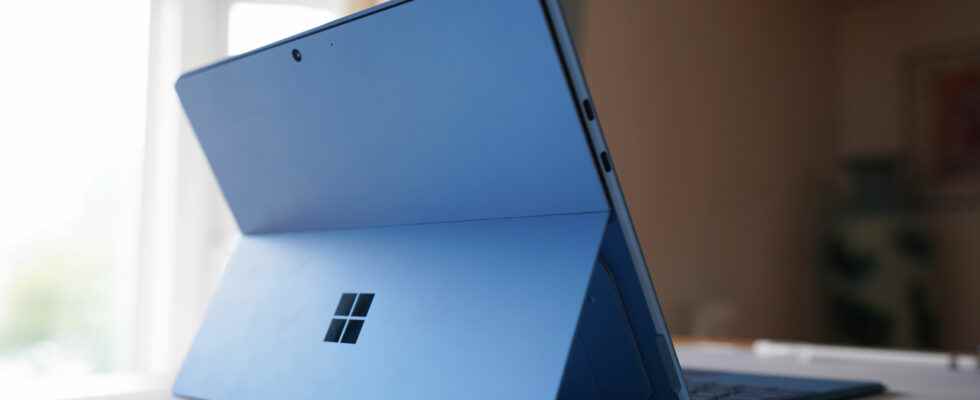In early October, Microsoft unveiled new Surface machines to celebrate the line’s 10th anniversary. If you’ve followed the history of the Surface line since its Windows RT debut, you know how far the company’s two-in-one PC has come over the years.
The new Surface is the culmination of a huge effort by Microsoft to offer an ARM and Intel version of the same machine. Of course, this comes at the expense of the Surface Pro X, but it is finally possible to choose the architecture you prefer without making compromises.
I tested Intel’s 12th Gen model (i7, 16GB RAM, 256GB storage) and while I’m enamored with the hardware/software integration, I can’t help but think that Microsoft is still too shy when the company had the opportunity to shake up the market.
Features
-
Processor : 12th Generation Intel Core i5/i7 or Microsoft SQ3 (based on Qualcomm) -
Screen : 13-inch PixelSense Flow display (3:2, 120Hz, 2880 x 1920) -
RAM : 8 GB, 16 GB, 32 GB (on Intel model) -
Storage : 128 GB, 256 GB, 512 GB, 1 TB (on Intel model). -
Rear camera : 10 MP autofocus with 4K video. -
Front camera : Full HD 1080p video -
Battery : up to 15.5 hours of use (or 19 hours on the 5G model). -
Connectivity : 2x USB-C (4.0 on the Intel model, 3.2 on the 5G model), Surface Connect and Keyboard ports, nano SIM on the 5G model. -
Operating system :Windows 11 -
Colors : Platinum, Sapphire, Forest, Anthracite

Surface Pro 9 – Best Prices:
 Fnac
Fnac1299.99
 Darty
Darty1299.99
A recipe that works…
This year, regardless of the configuration chosen, the Surface Pro 9 will come equipped with a 13-inch PixelSense Flow display in 3:2 aspect ratio and with a brushed metal finish, as on the Surface Pro 8. There are some differences very subtle, like the flip of the volume buttons and power button to the top of the Surface and the position of the air vents, but overall if you liked the design of the Surface Pro 8 you’ll love it the Pro 9.
My test copy sported a pretty “Sapphire” color that oscillates between sky blue and silver tones. The bluish hues pair well with the darker edges and stand out even better when accompanied by Microsoft’s “Signature” keyboard.

Image: June Wan/ZDNET
This keyboard, along with the Surface Slim Pen 2, is sold separately, but is essential for proper use of the Surface Pro. The Surface range has built a good reputation with this two-in-one format, so it’s disappointing not to see the keyboard provided at no extra cost. Not to mention that even the model with Core i5 and 128 GB costs more than 1200 €.
To be fair though, the Signature Keyboard and Slim Pen 2 are some of the best accessories I’ve tested. The responsiveness and travel of the keys makes it a very pleasant keyboard to use. The trackpad, while not as large as competing ultraportables, is very well built with similar bounce all over its surface. Everything connects without any configuration.

Image: June Wan/ZDNET
As for the PixelSense Flow display, I was very impressed with the color accuracy. So much so that I felt comfortable enough editing RAW images on-camera. The device has the same 120Hz refresh rate as the Surface Pro 8 and animations display smoothly and without hitches. Note that the Surface Pro 9 defaults to 60Hz, so you’ll need to dig into the display settings to switch to 120Hz with the “dynamic refresh rate (DDR)” option — a Windows 11 feature that allows you to switch between different refresh rates.
From what I’ve seen, however, DDR can be quite aggressive, especially when I’m pushing the Surface Pro 9 to its limits and hiccuping between different refresh rates.

Image: June Wan/ZDNET
Finally, you’ll find the usual array of ports all around the chassis, with two USB-Cs (4.0 Thunderbolt on the Intel version, 3.2 on the 5G version), a Surface Connect for charging, and a nano SIM card slot on the 5G version.
My main sticking point here is the use of two different USB standards depending on the version. If you plan to use the Surface Pro 9 as a desktop computer, then the Intel version, with Thunderbolt 4 support, is more attractive.
Performance: Intel or ARM?
That’s where it all comes down to for the Surface Pro this year: are you more #TeamIntel or #TeamArm? Those in the first camp are those looking for a versatile PC that can connect to a 4K monitor or take advantage of an external GPU. The ARM variant, which uses Qualcomm’s Snapdragon 8cx Gen 3 chip, offers 5G connectivity and better battery life, which is ideal if you’re a digital nomad.
For this test, I ran the Intel Surface Pro 9 through my standard workload with seven to eight tabs open for research and fact-checking and occasional 1080p video streaming in the background. As you might expect, the Core i7 processor and its 16GB of RAM handled it all without issue. But, again, this is one of the strongest setups.

Image: June Wan/ZDNET
I also used the Surface Pro 9 for Photoshop and Lightroom editing and both software worked without problems, even when handling heavy photos. This activity is generally where the ultraportables I test do the worst. The effectiveness of the Surface Pro on this was therefore a good surprise.
The Surface Pro has always been an exceptional work machine, so naturally I wanted to test the front-facing webcam. You know, that stuff that all manufacturers should now take seriously. While I’ve found myself increasingly reliant on external webcams for capturing video lately, I’m thrilled to report that the Surface Pro joins the 16-inch MacBook Pro in the camp of computers that don’t need of all that. Not only does the Pro 9’s 1080p camera give me a sharp image, it does so without overexposing the background and/or giving me an unflattering reddish tone.

Image: June Wan/ZDNET
The icing on the cake is that the Surface Pro 9’s camera is angled slightly downward, avoiding the “nosehole” effect that typically occurs when your laptop screen is tilted upward. This is a minor change that makes all the difference.
The ARM-based model inherits a neural processing unit (NPU) which allows the webcam to be more intelligent, in particular with the automatic framing, the improvement of the background blur and what Microsoft calls, “Voice Focus”. The company demonstrated what Voice Focus is good for at its Ignite conference and I have to admit that the background noise cancellation was very effective, but the demo is to be taken with a grain of salt, as always.
Autonomy
Again, Microsoft only sent me the 12th Gen Intel variant. I can therefore only give my opinion on the endurance of this model, but the model with ARM processor should be better on that side.
In my nearly week of use, I averaged six hours of battery life per charge on the Surface Pro 9. Keep in mind that’s with 120Hz running all the time and brightness set to approximately 65%. In my opinion, this is a good average in terms of autonomy.
Conclusion
You might be wondering “is there really something wrong with the Surface Pro 9?“. To that I will answer”Yes and no“. What I blame Microsoft for is playing it safe at a time when competitors like Lenovo and Asus are trying to redefine the PC experience.
That’s not to say the Surface Pro 9 is a bad product, it’s definitely going to earn a spot in our year-end ranking of the best 2-in-1s. It’s just hard to justify the extra cost of the keyboard, especially when the version with 16 GB of RAM and 256 GB of storage already costs 1639 €. This puts the device against the MacBook Pro and MacBook Air equipped with the M1 and M2 chips.
Alternatives
Source: “ZDNet.com”
